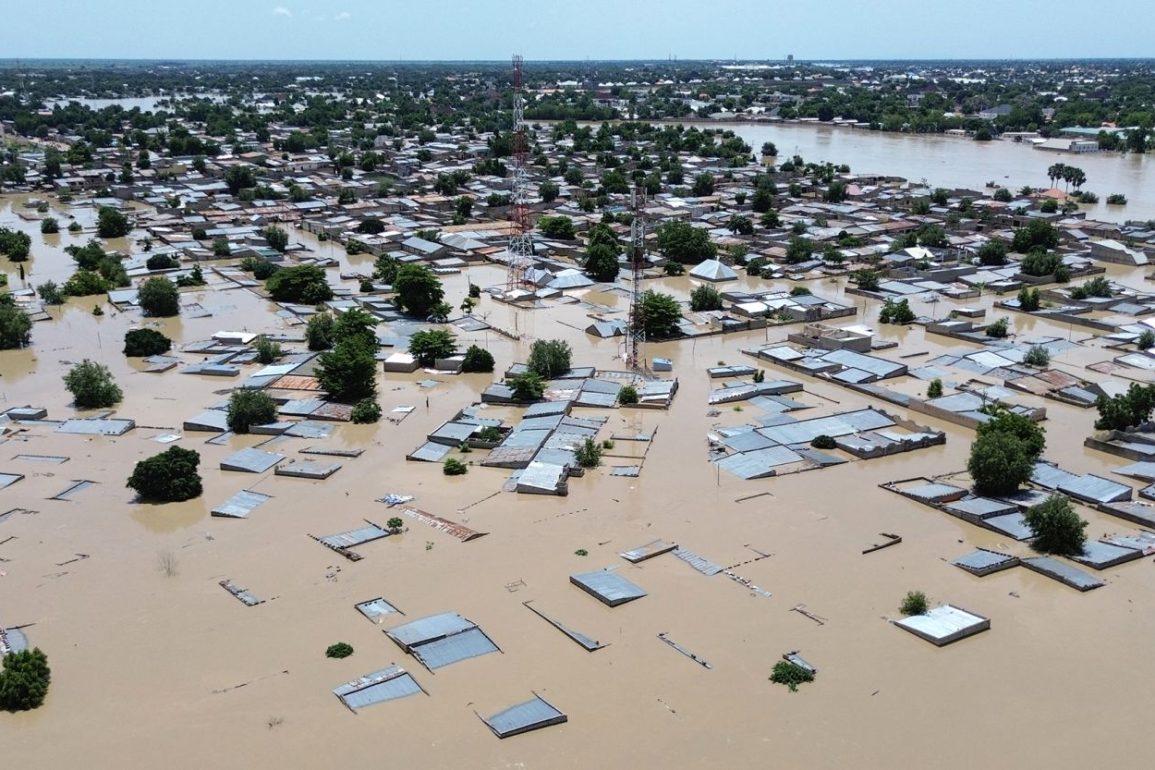Floodwaters from an overflowing dam in northern Nigeria have inundated a zoo, sweeping animals like crocodiles and snakes into nearby communities as the region faces some of the most severe flooding in recent years.
In Borno State, located in the northeast and among the areas worst hit by the floods, officials at a state-run zoo reported on Tuesday that surging waters had killed “more than 80%” of the facility’s wildlife. The flood also washed animals, including dangerous reptiles, into local neighborhoods.
A widely shared video on social media captured an ostrich wading through a flooded street in the capital, Maiduguri. Images of the flooded Sanda Kyarimi Park Zoo, taken on September 10, 2024, illustrate the extent of the devastation.
Manzo Ezekiel, a spokesperson for Nigeria’s disaster management agency, NEMA, told on Wednesday that efforts are underway to recapture the displaced animals. “I believe the zoo managers are not resting. They will be doing their best to recover some of the animals because their presence in the communities poses a danger to the people,” he stated.
Much of Maiduguri remains underwater after the Alau Dam, located 20 kilometers (12 miles) southeast of the city, overflowed during the weekend, submerging entire homes. The United Nations Refugee Agency (UNHCR) described the flooding as the worst seen in Maiduguri in 30 years.

Although no human deaths have been confirmed in the immediate event, over 200 fatalities have been reported from other floods across Nigeria in recent weeks. A flooded street in Maiduguri was captured on September 10, 2024, highlighting the city’s devastation.
The UN estimates that around 280,000 people have been affected by the flooding in Maiduguri, with approximately 200,000 displaced. Nationwide, weeks of flooding have resulted in 229 deaths and displaced over 386,000 individuals, according to the latest data from NEMA. Northern Nigeria has borne the brunt of the flooding, the data revealed.
The Borno dam spillway collapse significantly increased water flow, intensifying the flooding in surrounding areas, NEMA said. Ezekiel added that the flood was “very intense” and “beyond what was forecasted,” admitting, “We didn’t envisage this volume of water rushing into the town.”
Nigeria’s meteorological agency, NIMET, had warned of flash flood risks across the country due to torrential rains. In August, the Nigeria Hydrological Services Agency (NIHSA) also alerted authorities to the rising water levels of the Niger River, urging states to remain vigilant.
Projections from the Intergovernmental Panel on Climate Change indicate that extreme rainfall events, such as the one experienced in Nigeria, are likely to increase in both frequency and intensity across much of Africa, including Nigeria, due to human-caused climate change.

